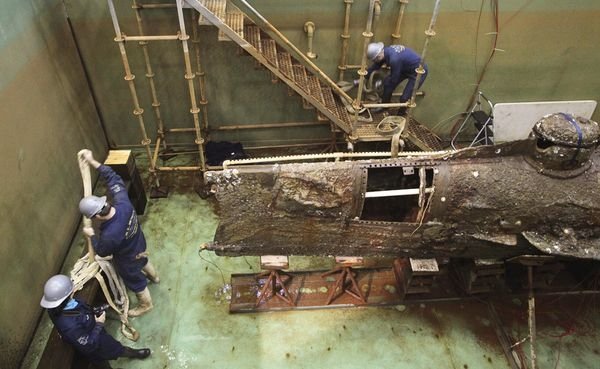
Brooke and Porter designed the ship's casemate to have angled sides to aid in deflecting enemy shot. For protection, Virginia's casemate was built of layers of oak and pine to a two-foot thickness before being covered by four inches of iron plate. Workers soon cut down the burned timbers of Merrimack to below the waterline and commenced construction of a new deck and the armored casemate. Moving from preliminary sketches to advanced plans, both men envisioned the new ship as a casemate ironclad. The 1860s was a time of many turning points in terms of how naval warfare was fought. Dahlgren smoothbores, 2 × 12-pdr howitzersĪpproved on July 11, 1861, work soon began at Norfolk on CSS Virginia under the guidance of Brooke and Porter. American Civil War The age of submarine warfare began during the American Civil War.

Afterwards, it was placed on display at the Capitol Park Museum - Baton Rouge. His one-man, hand-cranked machine did little harm. B ushnell's Turtle was the first submarine used in war.
#Civil war submarine series#
The University of Houston's College of Engineering presents this series about the machines that make our civilization run, and the people whose ingenuity created them. The submarine was then transported to Baton Rouge, where the old concrete was removed as part of restoration efforts. Today, we invent the submarine, against all odds. After being in various displays around the Square it was placed in the shelter of the arcade on the ground floor of the Presbytere in 1957, where it would remain until 1998. In 1942 the submarine was acquired by the Louisiana State Museum and moved to Jackson Square. The South, hoping to break this blockade, turned to an i. At some point probably in the 1930s the interior of the submarine was filled with concrete in an attempt at preservation that later generations of conservators found questionable. During the Civil War, the North imposed a suffocating blockade of a number of key Confederate ports. In 1908 the submarine was moved to the grounds of Camp Nicholls Confederate Home on Moss Street, beside Bayou St. The Bayou submarine and the Pioneer may have undergone trials at about the same time, and confusion of the two may date back to contemporary accounts it is not clear which one was constructed first. The Hunley was the worlds first combat submarine and actually sank a Union warship, The Housatonic, after which she disappeared beneath the waves with all. Hunley, from the planning stages through execution.It also contains a detailed description of objects excavated from the seabed and provides an analysis of the hull in the state it was found at the time of recovery. The David operated on steam making it only a partial submarine as. The Confederacy, on the other hand, put more emphasis on submarines. It was largely unsuccessful and sank in April of 1863. The traditional identification as the Pioneer was not questioned seriously until historical research in the late 20th century showed the Pioneer to be of a different design than the one retrieved from Bayou St. Description: This comprehensive archaeological report covers the recovery of Civil War submarine H. One of the first submarines for the Union was the USS Alligator which was launched in 1862. It was put on display beside the Bayou at Spanish Fort Amusement Park as a curiosity, incorrectly identified as the Confederate submarine Pioneer. John where it joins Lake Pontchartrain in New Orleans, Louisiana, where the submarine was presumably scuttled to prevent it falling into Union hands after the capture of New Orleans. The submarine was rediscovered in 1878 during the dredging of Bayou St. No period documentation for the submarine is known to exist, and its original name and many details about it remain unknown. The submarine is constructed of riveted iron, 20 feet (6.1 m) long, 3 feet (0.91 m) wide and 6 feet (1.8 m) deep, with a hand-cranked propeller. John Confederate Submarine is an early military submarine built for use by the Confederate States of America during the American Civil War. On display at the Louisiana State Museum, Baton Rouge, 2008 The submarine on display beside Bayou St.


 0 kommentar(er)
0 kommentar(er)
